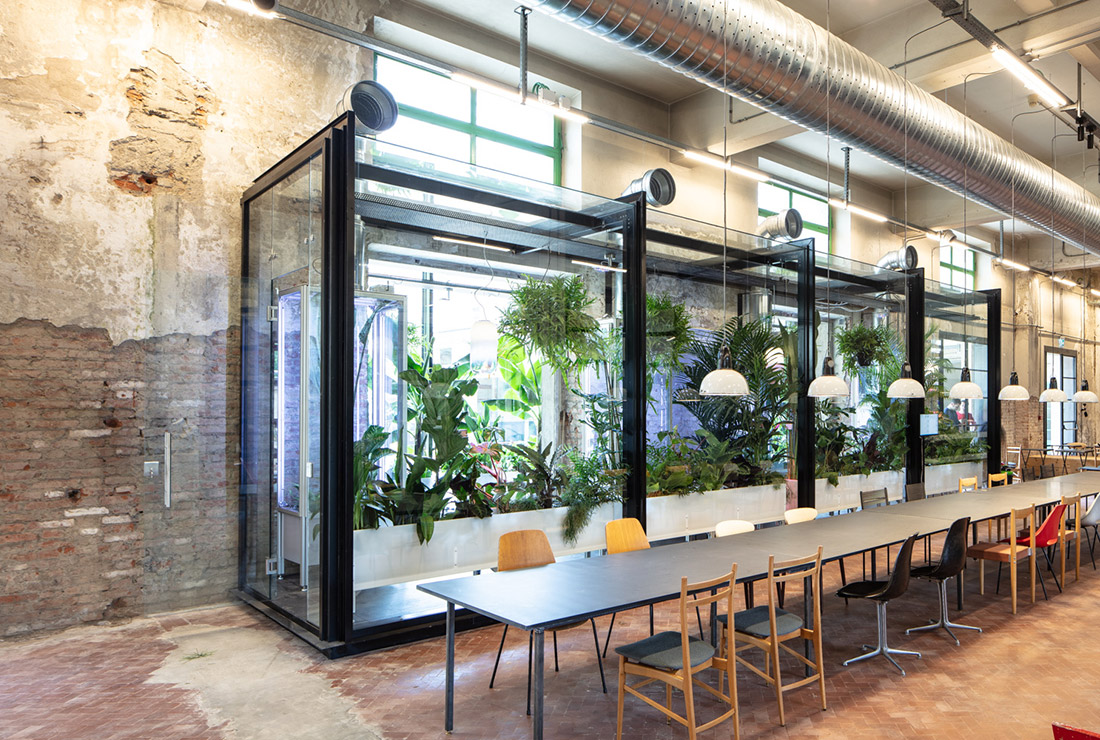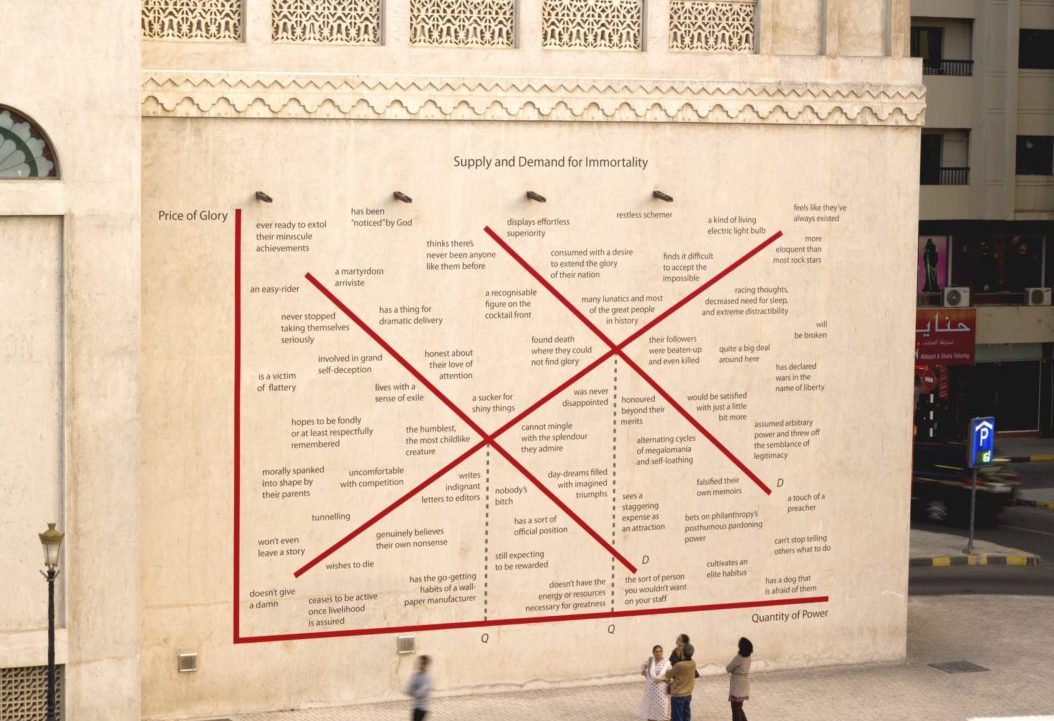XENIA KALPAKTSOGLOU
Changing Things So Everything Stays the Same
- 17.12.2018
Nikos Arvanitis, Tonight Live, 2009. Iron, Plexiglas and fluorine lamps. 250 x 200 x 160 cm. Installation view of the 2nd Athens Biennale 2009, HEAVEN, at Flisvos.
All images © Athens Biennale
In the post-Olympic Games tally of 2005, artist Poka-Yio, art critic Augustine Zenakos and I founded the Athens Biennale, which I co-directed until July 2016. From the outset, we conceptualised and developed the organisation as an institutional experiment that could be shaped and modified by peers. We relied on the equal contributions of local and international participants, along with a small core team.
Nikos Arvanitis, Tonight Live, 2009. Iron, Plexiglas and fluorine lamps. 250 x 200 x 160 cm. Installation view of the 2nd Athens Biennale 2009, HEAVEN, at Flisvos.
All images © Athens Biennale
From one edition to the next we progressively offered to share its management or to hand it over to larger groups2 aiming not simply for another curatorial perspective (content) but rather for other institutional practices (context). Test-driving well-known ideas around the expanded notion of ‘institutional auto-critique,’3 we opted for uninterrupted operation, concurrently casting each edition’s opening as the climax of certain activities and as the start of a new phase of operation, informed by its predecessor. Our refusal to delegate addressing the antinomies and tensions of producing a biennial to a single curatorial entity and our attempt to develop long-term processes is – in my view – what differentiated the Athens Biennale.
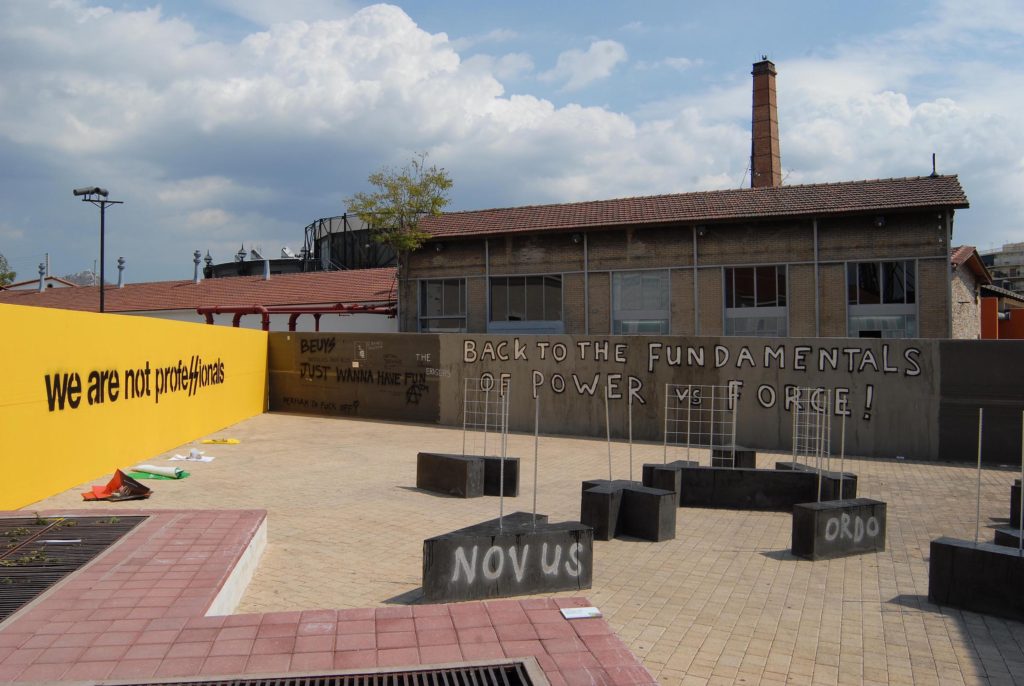
The Erasers, We Are Not Professionals, 2007. Marc Bijl, Fundaments of Culture: The Pentagram, 2007. Installation view of the 1st Athens Biennial 2007, Destroy Athens, at Technopolis City of Athens.
The Erasers, We Are Not Professionals, 2007. Marc Bijl, Fundaments of Culture: The Pentagram, 2007. Installation view of the 1st Athens Biennial 2007, Destroy Athens, at Technopolis City of Athens.
In this respect, far from representing withdrawal or cynicism, my departure from the Athens Biennale was largely informed by the backfiring of the organisation’s once-perceived strengths, namely, its independence from state and municipal cultural policy, its oscillation between biennial institutional perception4 and an ethos closer to artist-run, self-organised initiatives (self- governance, un/sustainability5 and refusal to be turned into a tool of city branding), and its role in Athens, where debates around the ambivalences of cultural practices in times of abrupt political and socio-economic developments are urgently relevant.
Personal experience aside, my insight stems from the understanding of biennial making as an artistic-institutional practice connected to broader social, economic and political developments. The biennial exhibition is an effective model and an ideal context for working towards social inclusion and political transformation, which necessarily exceeds the duration and artistic purview of each edition. Echoing Lars Bang Larsen and Søren Andreasen’s remark that, “when curators are no longer custodians of eternity, they must reflect on their own institution’s legitimacy,”6 two familiar questions fuel my concerns: Are biennials bound to be crudely reduced to a subject or a theme, or could they possibly harbour transformative potential despite their ephemerality? And is it realistic for artists and curators to (still) imagine that they are not complicit7 with power?
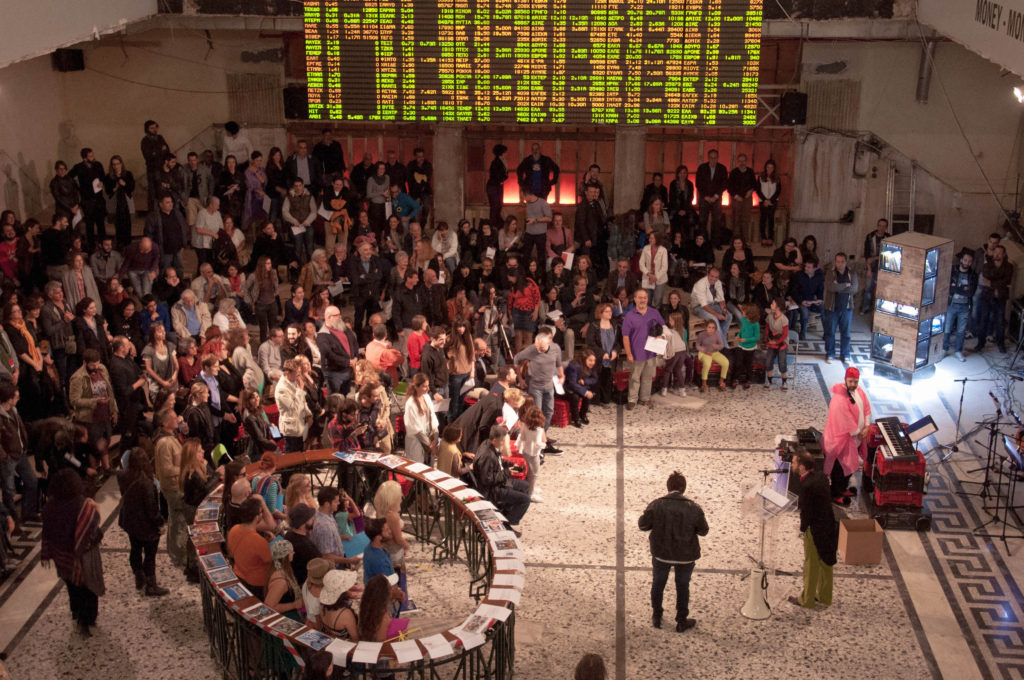
The Beggars’ Operas, New Greece (The Making-Of), 2013 Opera. Performed in the former Athens Stock Exchange. 4th Athens Biennale 2013, AGORA.
The Beggars’ Operas, New Greece (The Making-Of), 2013 Opera. Performed in the former Athens Stock Exchange. 4th Athens Biennale 2013, AGORA.
Biennials stand for a particular genre of art institutions whose subversive potential is constantly eroded by the temporality of the biennial exhibition, the motivations of the guest artistic director(s) and their elective affinity with the agencies that typically initiate, run and fund them. The global recession that started in 2008 undermined the modus operandi of biennials on more than the financial level. The resulting deep funding cuts test biennials’ ability to produce the type of large-scale show they were designed to deliver. The ongoing renunciation of politics on the one hand, and the growing social mistrust of power and its institutional agents on the other, have brought back with great intensity the perception of biennials as neoliberal tokens.8
Ultimately, the contradictions between the biennial’s set qualities (such as mobility, inclusion, diversity and discursiveness), structural characteristics (such as temporality, resource mobilisation, funding sources and links to other institutions and authority), and overdetermined curatorial concept statements provide ground for the dismissal of biennials as superficial, suspicious and speculative. Their seeming obliviousness or indifference to the politics of their partner institutions critically crystallises these contradictions. Since 2009, however, biennial participants have been taking these doubtful rhetorics and practices into account, favouring collective work (sharing responsibility/delegating authority), public participation (placing the local community at the forefront9) and the creation of shared spaces for conviviality, which are usually named academies, schools, agoras, assemblies, parliaments and so on.
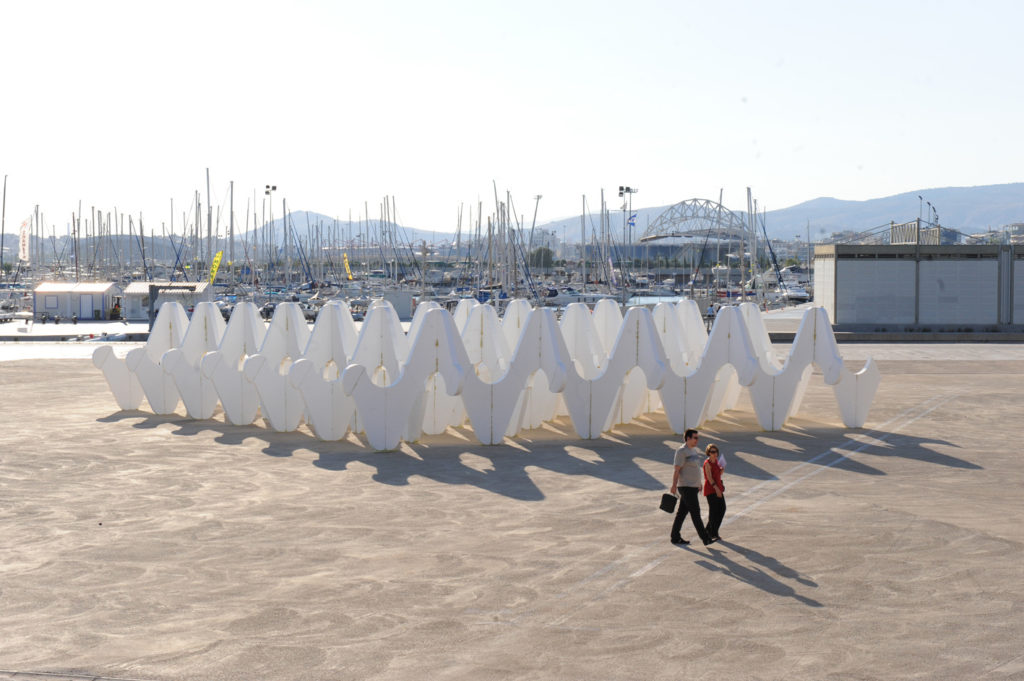
Kostas Roussakis, Egg Tray, 2009. Extruded and expanded poly- styrene. Dimensions variable. Installation view of the 2nd Athens Biennale 2009, HEAVEN, at the Water Plaza in Faliron.
Kostas Roussakis, Egg Tray, 2009. Extruded and expanded poly- styrene. Dimensions variable. Installation view of the 2nd Athens Biennale 2009, HEAVEN, at the Water Plaza in Faliron.
Historically, biennial exhibitions have attempted to manoeuvre between established institutional typologies. Today, the biennial institutional model is emphatically perceived and treated by its stakeholders as a site for social engagement. Yet, there seems to be little possibility to elaborate anything other than curatorial novelty.Biennial exhibitions fail to be sufficiently compelling to present themselves as an alternative to institutionalised practices, and risk becoming largely irrelevant10 and obsolete. This is a reality they tackle, if at all, more poetically than polemically. That said, it is critical to remember that the short-lived institutional experiments performed in biennial exhibitions have operated, so far, in parallel to the mainstream, and that restoring their challenged legitimacy while “being a beacon of hope” can end up being “a lonely business.”11
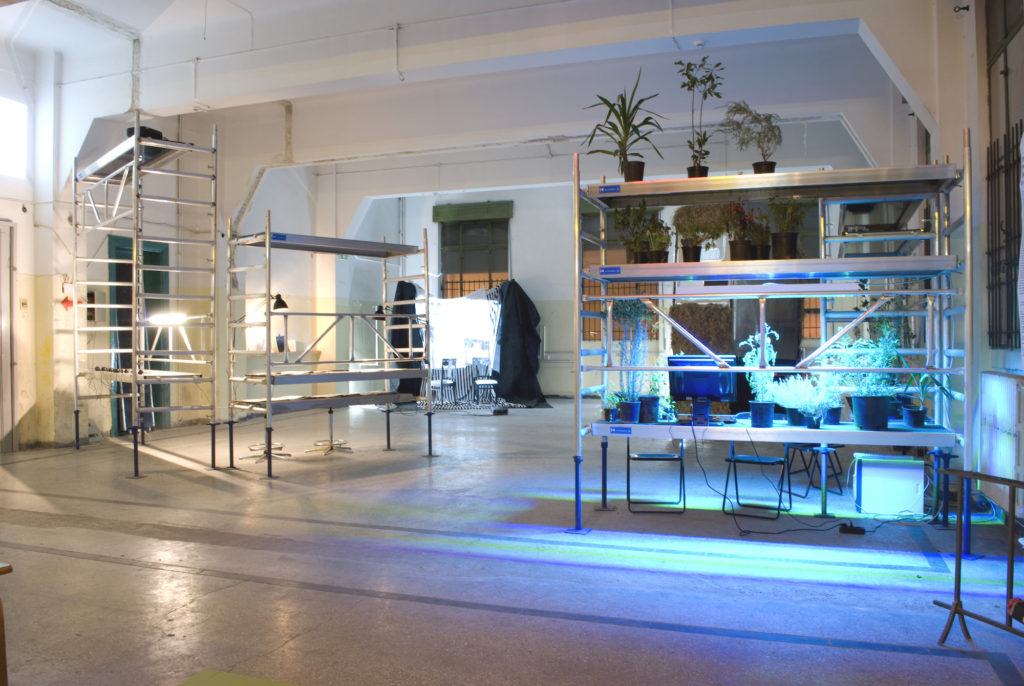
KERNEL (Pegy Zali, Petros Moris, Theodoros Giannakis) Word of Mouth, 2011 Installation view of the 3rd Athens Biennale 2011, MONODROME, at Diplareios School.
KERNEL (Pegy Zali, Petros Moris, Theodoros Giannakis) Word of Mouth, 2011 Installation view of the 3rd Athens Biennale 2011, MONODROME, at Diplareios School.
NOTES
1 The title is based on Don Fabrizio Corbera’s famous quote, “Things will have to change in order that they remain the same,” in Luchino Visconti’s 1963 film The Leopard (Il Gattopardo).
2 Visit http://athensbiennale.org/agora/
and http://athensbiennale.org/en/news/ μπιενάλε-της-αθήνας-2015-2017-ομονοια-2/
3 “An institutional critique of institutional critique, what can be termed ‘institutionalized critique’, has then to question the role of education, historicization and how institutional auto-critique not only leads to a questioning of the institution and what it institutes, but also becomes a mechanism of control within new modes of governmentality, precisely through its very act of internalization.” In Simon Sheikh, “Notes on Institutional Critique,” Transversal Texts, January 2006. http://eipcp.net/transversal/0106/sheikh/en.
4 The Athens Biennale was founded with an equal interest in the exploration of the biennial/ large-scale exhibition phenomenon and in the established canon of independent art institutions. Entering the discourse at a time when ‘biennial bashing’ was already well underway, we made a point undertaking our exploration through practice.
5 The current focus on art labour and on the professionalisation (institutionalisation) of the cultural field, along with the re-emergence of the class issue (once considered outdated), made me realise that I was gradually becoming an active agent of others’ (and my own) precarisation.
6 Søren Andreasen and Lars Bang Larsen, The Critical Mass of Mediation, Copenhagen: Internationalistisk Ideale, 2012, p. 103.
7 From the Latin verb meaning ‘to fold together,’ complicare, formed by combining com– (meaning ‘with,’ ‘together,’ or ‘jointly’) and the verb plicare, meaning ‘to fold.’ This literal meaning evolved into a figurative one: the definition of complicit (“helping to commit a crime or do wrong”) describes individuals who are ‘folded together’ metaphorically. From https://www. merriam-webster.com/dictionary/complicit.
8 “Are [biennials] the artistic playground of neoliberal capitalism or do they enable the forging and testing of alternative, critical, even subtly subversive perspectives?”, in Charles Green and Anthony Gardner, Biennials, Triennials, and Documenta: The Exhibitions that Created Contemporary Art, West Sussex, UK: Wiley Blackwell, 2006, p. 13.
9 This is exemplified by a focus on engagement with grassroots movements and domestic models of public art as well as notions of ‘commoning’ applied across varied contexts. Recent approaches to this problematic cultural mission can be found in Tirdad Zolghadr, Traction, Berlin: Sternberg Press, 2016. Suhail Malik also suggests that “these efforts also perpetuate and entrench the very limitations of art they seek to overcome.
10 Recent approaches to this problematic cultural mission can be found in Tirdad Zolghadr, Traction, Berlin: Sternberg Press, 2016. Suhail Malik also suggests that “these efforts also perpetuate and entrench the very limitations of art they seek to overcome. The resulting interminable endgame of art’s critical maneuvers serves after a short moment to provide new paradigmatic exemplars for it, a condition of tamed instability that characterises contemporary art today well enough.” Abstract of talk series “On the Necessity of Art’s Exit from Contemporary Art,” hosted by Artists Space in New York between May 3 and June 14, 2013, http://artistsspace.org/programmes/ on-the-necessity-of-arts-exit-from-contemporary-art.
11 Paraphrasing Tracy’s last lines in Mistress America, a 2015 work by independent filmmaker Noah Baumbach, whose ‘cultural elitism’ is often noted by film critics and audiences alike.
ABOUT THE AUTHOR
Xenia Kalpaktsoglou is a curator and one of the founding members of The Laboratory for the Urban Commons (www.luc-athens. org). In 2005, she co-founded the Athens Biennale, a non-profit independent organisation which she co-directed until 2016. Her curatorial practice is heavily rooted in collaborations and focuses on new methodologies of artistic intervention and institutional frameworks of/for research, pedagogy, cultural production and activism.


